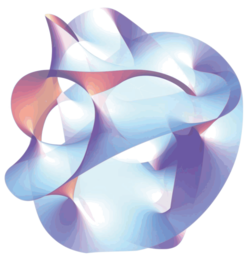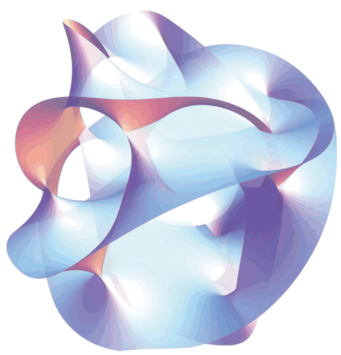Listening to the shape of string theory universes
A new method for determining the masses of particles predicted from string theory's extra dimensions
One of string theory's most prominent predictions is that our universe has extra spatial dimensions that we do not observe directly. Nonetheless, just as the shape of an instrument, such as a trumpet, determines the sound of musical notes played, so too the shape of string theory's extra dimensions determines the physics, in particular the masses of particles, that would be observed in our 4-dimensional universe. Computing the masses of these particles has been a longstanding technical challenge, especially for the complicated shapes of extra dimensions that underlie most efforts to connect string theory to real-world physics. Emanuel Malek (Max Planck Institute for Gravitational Physics, Potsdam) and Henning Samtleben (École Normale Supérieure de Lyon) have developed a powerful new method, that for the first time allows us to compute the masses arising from the shapes of extra dimensions in important string theory models. The researchers exploited the fact that many interesting shapes for the extra dimensions can be squashed, stretched and bent into much simpler and highly symmetric ones, such as round spheres, for which the masses can be computed straightforwardly. Their new method allows us to track for the first time how this squashing, stretching and bending of the extra dimensions affects the masses of particles, thus allowing us to determine the masses due to complicated shapes. This will lead to a better understanding of what shape the extra dimensions of string theory must have to realistically model our universe, as well as progress in learning about fundamental interactions via the "holographic principle".
Paper abstract

Exceptional field theories yield duality covariant formulations of supergravity. We show that they provide a highly efficient tool to compute the Kaluza-Klein mass spectra associated to compactifications around various background geometries relevant for string theory and holographic applications. This includes geometries with little to no remaining symmetries, hardly accessible to standard methods. As an illustration, we work out the masses of some higher Kaluza-Klein multiplets around warped geometries corresponding to some prominent












